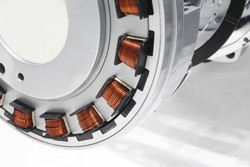Solutions to permanent magnet problem
Rare earth magnets are much stronger than ferrite ones, resulting in greater performance for smaller motors. However, rare earth elements – such as Dysprosium needed in most technological magnets – are almost exclusively mined in China, and increased local demand has led to a severe reduction in exports to the rest of the world. Against this backdrop, EU-funded researchers looked for ways to improve magnetic properties of traditional magnetic materials through acquired knowledge in nanoscience and latest advances in nanotechnology. Specifically, the project NANOPYME (Nanocrystalline permanent magnets based on hybrid metal-ferrites) centred on the use of improved ferrites and metal nanoparticles to make alternative permanent magnets. This approach will allow partial substitution of controversial rare earth-based magnets. Researchers achieved significant improvement of ferrite magnetic properties by synthesising novel hybrid nanocomposites based on metals and metal-ferrite oxides. They developed a technique called combinatorial material synthesis, combining the complementary magnetic properties of both materials to produce magnetically stronger magnets by comparison with traditional ferrites. The project has resulted in a Patent application (P201600092): Microcomposite Permanent Magnet Material without Rare-Earths and Production Method. The new magnets are not sensitive to air exposure, compared to rare earth ones that need to be coated to avoid rapid oxidation. Competitiveness, safety, recyclability and eco-efficient production are additional advantages pushing their introduction from the laboratory to industry. To prove the potential of the newly developed magnetic materials, researchers used them to produce a full-scale prototype motor for an electric motorbike(opens in new window). In addition, high-precision motors were developed incorporating magnets made from recycled magnetic waste. Grinding strontium-ferrite into fine and homogeneous powder for use in magnets was one of the main project achievements. Specifically, researchers developed a new process that allows improvement of the original magnetic properties of both strontium- and cobalt-ferrite powders. Through NANOPYME, Europe mobilised its resources in a concerted way to take the lead in development of permanent magnets free of rare earth elements. The material processing methods established will significantly reduce the environmental impact of permanent magnet production.



